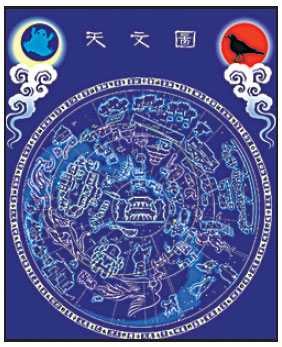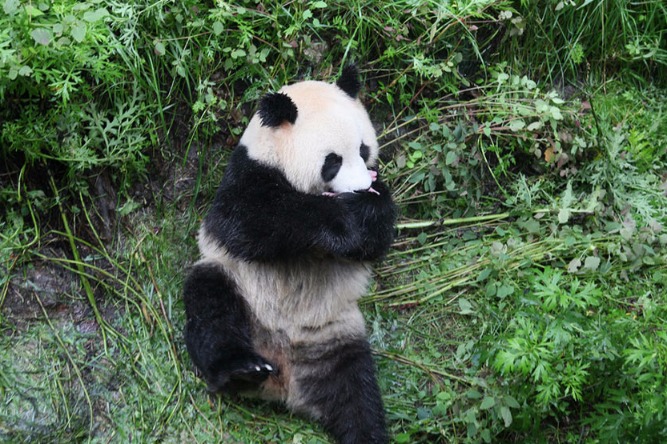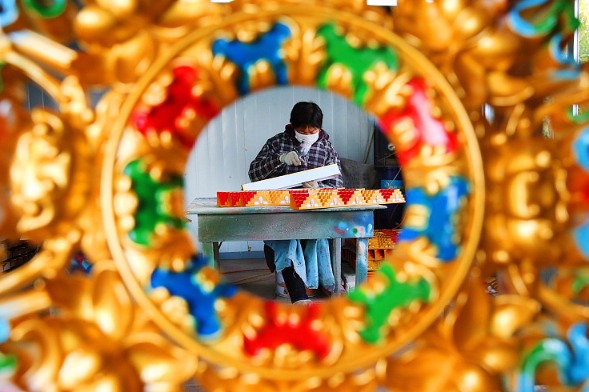Starry, starry night
China looked at constellations differently from other civilizations. Two astronomers have published a book on the nation's traditional view of the stars. Xing Yi reports.
Different civilizations interpreted the constellations of stars in their own different ways. The Chinese had theirs, but few people today know their traditional constellations.
The book, Roving China's Heavens, written in a popular science style by two Chinese astronomers, provides a quick and accessible guide to the ancient Chinese system of constellations. At a symposium promoting the Chinese traditional culture of stars, titled Come to Know the Chinese Stars, held in Beijing on Dec 23, the book drew an appreciative crowd.
Based on research materials from the Song Dynasty (960-1279), the book describes the Chinese constellations system that was used by royal astronomers through the Chinese dynasties for astrological and agricultural purposes.
"There is a huge difference between the Chinese system of constellations and the Western one, which was based on Greco-Roman astronomy. As Chinese, we should know our traditional constellations," says one of the co-authors, Qi Rui, a 34-year-old researcher at Beijing Institute of Science and Technology. The other author is Wan Haoyi, who is pursuing a doctoral degree on astronomy from Beijing Normal University and used to work at Beijing Ancient Observatory.
Compared to the 88 constellations officially adopted by the International Astronomical Union, the Chinese system has 283 constellations consisting 1,464 stars.

Those constellations are further grouped into three Yuan (Enclosures), which are three round areas around the North Celestial Pole that can be seen year-round in the Northern Hemisphere, and 28 Xiu (Mansions or lunar lodges), which are similar to the zodiacal band but are divided according to the movement of the moon over a lunar month instead of the sun in the course of a year.
Each constellation has its name and meaning. For example, Zi Wei Yuan (the Purple Forbidden Enclosure) reflects the Forbidden City where emperors and their families lived. Some of the constellations in it are named Emperor of Heaven, Crown Prince and Guardian. Tai Wei Yuan stands for the Supreme Palace, where the constellations are named after officials and ministers.
In the Tian Shi Yuan (Heavenly Market Enclosure), the constellations are named after the tools, facilities and people in the market, such as Textile Ruler, Jewel Market and Officials of the Market.
Unlike Western constellations where the stars in one constellation often resemble a shape, Chinese traditional constellations are largely simple dots and lines, and many constellations have only one or two stars.
The book introduces all the Chinese constellations with Bu Tian Ge (Ballad of Sky Walking), which was compiled around AD 600, in a long verse containing the names, locations and features of those constellations.
The book came about through an accidental discovery in 2009, when Qi was cleaning old Chinese astronomical instruments in Beijing Ancient Observatory with Wan.
They found there were many differences between the constellations on the instruments and the astronomy chart inscribed on the stone stele from the Song Dynasty, which was found in Suzhou, East China's Jiangsu province, and believed to be the oldest stone stele of its kind.
The discovery led Qi and Wan to study the differences.
After careful examination, they found out why the constellations on the instruments were different from the traditional ones: The instruments preserved in the Beijing Ancient Observatory were largely from the Qing Dynasty (1644-1911), the last dynasty of China, when the country's astronomy was greatly influenced by Western science as missionaries came to the country.
During the following years, Qi and Wan collaborated in collecting trustworthy ancient Chinese documents of astronomy and comparing them with the current international astronomical standard.
"What we present now is an introductory book for amateurs, but we have also developed a database of the complete Chinese star catalog with cross references to contemporary astronomy," says Qi.
The database has been uploaded to the China Virtual Observatory online platform, and anyone who is interested in traditional Chinese constellations can view it on the Internet.
Together with the database, 99 pictures of the constellations designed by Xu Gang have also been released at the symposium and incorporated into the online Virtual Observatory. Xu is an astrophile who has focused on visualizing the abstract Chinese constellations since 2007, and has completed more than 170 images of Chinese traditional constellations.
Contact the writer at xingyi@chinadaily.com.cn
| Astronomy charts designed by astrophile Xu Gang are inspired by traditional ballad Bu Tian Ge |

(China Daily USA 01/07/2015 page9)



















